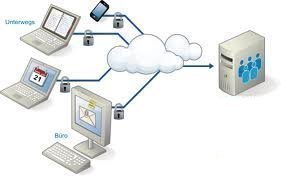What is an Operating System
The operating system is the core software component of your computer. It performs many functions and is, in very basic terms, an interface between your computer and the outside world. In the section about hardware, a computer is described as consisting of several component parts including your monitor, keyboard, mouse, and other parts. The operating system provides an interface to these parts using what is referred to as "drivers". This is why sometimes when you install a new printer or other piece of hardware, your system will ask you to install more software called a driver.
What does a driver do?
A driver is a specially written program which understands the operation of the device it interfaces to, such as a printer, video card, sound card or CD ROM drive. It translates commands from the operating system or user into commands understood by the the component computer part it interfaces with. It also translates responses from the component computer part back to responses that can be understood by the operating system, application program, or user. The below diagram gives a graphical depiction of the interfaces between the operating system and the computer component.
Other Operating System Functions
The operating system provides for several other functions including:
- System tools (programs) used to monitor computer performance, debug problems, or maintain parts of the system.
- A set of libraries or functions which programs may use to perform specific tasks especially relating to interfacing with computer system components.
The operating system makes these interfacing functions along with its other functions operate smoothly and these functions are mostly transparent to the user.
Operating System Concerns
As mentioned previously, an operating system is a computer program. Operating systems are written by human programmers who make mistakes. Therefore there can be errors in the code even though there may be some testing before the product is released. Some companies have better software quality control and testing than others so you may notice varying levels of quality from operating system to operating system. Errors in operating systems cause three main types of problems:
- System crashes and instabilities - These can happen due to a software bug typically in the operating system, although computer programs being run on the operating system can make the system more unstable or may even crash the system by themselves. This varies depending on the type of operating system. A system crash is the act of a system freezing and becoming unresponsive which would cause the user to need to reboot.
- Security flaws - Some software errors leave a door open for the system to be broken into by unauthorized intruders. As these flaws are discovered, unauthorized intruders may try to use these to gain illegal access to your system. Patching these flaws often will help keep your computer system secure. How this is done will be explained later.
- Sometimes errors in the operating system will cause the computer not to work correctly with some peripheral devices such as printers.
Operating System Types
There are many types of operating systems. The most common is the Microsoft suite of operating systems. They include from most recent to the oldest:
- Windows XP Professional Edition - A version used by many businesses on workstations. It has the ability to become a member of a corporate domain.
- Windows XP Home Edition - A lower cost version of Windows XP which is for home use only and should not be used at a business.
- Windows 2000 - A better version of the Windows NT operating system which works well both at home and as a workstation at a business. It includes technologies which allow hardware to be automatically detected and other enhancements over Windows NT.
- Windows ME - A upgraded version from windows 98 but it has been historically plagued with programming errors which may be frustrating for home users.
- Windows 98 - This was produced in two main versions. The first Windows 98 version was plagued with programming errors but the Windows 98 Second Edition which came out later was much better with many errors resolved.
- Windows NT - A version of Windows made specifically for businesses offering better control over workstation capabilities to help network administrators.
- Windows 95 - The first version of Windows after the older Windows 3.x versions offering a better interface and better library functions for programs.
There are other worthwhile types of operating systems not made by Microsoft. The greatest problem with these operating systems lies in the fact that not as many application programs are written for them. However if you can get the type of application programs you are looking for, one of the systems listed below may be a good choice.
- Unix - A system that has been around for many years and it is very stable. It is primary used to be a server rather than a workstation and should not be used by anyone who does not understand the system. It can be difficult to learn. Unix must normally run an a computer made by the same company that produces the software.
- Linux - Linux is similar to Unix in operation but it is free. It also should not be used by anyone who does not understand the system and can be difficult to learn.
- Apple MacIntosh - Most recent versions are based on Unix but it has a good graphical interface so it is both stable (does not crash often or have as many software problems as other systems may have) and easy to learn. One drawback to this system is that it can only be run on Apple produced hardware.


